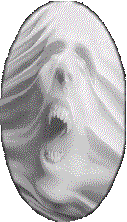You remember all those
funny “why” questions? Why
isn't 11 pronounced onety one? Why do you park in a driveway and drive on a parkway? Why are a wise man and a wise guy opposites? Why do croutons come in airtight packages when they are just stale bread? Why are boxing rings square? Why is it called a Confederate Rose when it is neither Confederate nor a Rose? Maybe it is a stretch on the last one . . . .
 |
| Photo courtesy of Wikipedia |
One of the South’s most beloved plants, the Confederate Rose, is
actually a native of China and it belongs to the Hibiscus family. The botanical
name for this blooming beauty is Hibiscus
mutabilis. So how did this plant acquire its name? Legend is that a wounded
Confederate soldier spilled blood at the foot of the plant and the flowers
soaked it up. The flowers have the remarkable ability to bloom pure white and
the next day turn to pink. . .hence the romantic legend.
The blooms (are often mistaken for peonies which only bloom in
the spring) can be single or double and also bloom pink or red. By the way, how
do you pronounce peony? Is it pee-oh-knee or pee-uh-knee? I digress.
 |
| Peony |
 |
| Confederate Rose |
The Confederate Rose is difficult to find in nurseries and is
now generally a pass-along plant. You can start it from seed but the easiest
way is to find someone to give you a stem cutting and root it in water. It
likes full to part sun and fertile soil. It blooms in the fall and comes back
in our area from the roots. It will grow into a woody shrub or small tree.
The most popular plant is the Confederate Rose called Plena. The
big double blossoms open white, change to pink the next day and end up red
before falling. Often, you will see all three colors on the same plant.
If you are a member of Holly Gardeners here at Holly Lake Ranch,
you are fortunate to have several folks that will give you a cutting in the
fall. You don’t even have to ask. . pass-along plants are brought to meetings
and are free!
Now maybe someone can tell me why the cereal is called Grape Nuts when it is neither grapes nor nuts?
Ann Reynolds





